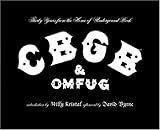
“The Thelonious Monk Orchestra at Town Hall” (Thelonious Monk)
On the short list of American musical geniuses, Thelonious Sphere Monk is certainly included.
The cardboard boxes are everywhere, stacked almost to the ceiling, in the Manhattan loft where W. Eugene Smith, the renowned American photojournalist, once shared living space with Hall Overton, an obscure composer and pianist. Inside the boxes are wigs, maybe thousands, the inventory of a Chinese business that now holds the lease. Nothing about this nondescript building in the flower district betrays its decade-long history as a bustling clubhouse for the jazz scene, beginning in the mid-1950s.
So it takes some effort to picture Thelonious Monk, one of jazz’s great composers, pacing these floorboards early in 1959 as he prepares for his momentous large-group debut at Town Hall, which would help lay the groundwork for a career beyond clubs. It takes imagination to place him and Overton at a pair of upright pianos, hashing out chord voicings for one after another of his songs. But these things did happen; that much we know from an extraordinary cache of tape recordings made by Smith, who had wired most of the building with microphones.
The Monk-and-Overton tapes account for just a fragment of some 3,000 hours of material amassed by Smith from 1957 to ’65. Because of the light they shed on both musicians, their value is inestimable. Monk, famous for his cryptic silence and cavalier methods, comes across as exacting, lucid, even voluble — an eccentric genius, yes, but also a diligent one. Overton, enlisted to orchestrate Monk’s knotty compositions, is revealed as a patient amanuensis and a brilliant foil.
“What’s obvious is their mutual respect, and the extent of their precision,” said the pianist Jason Moran, 34. “It’s crazy to hear how specific everything was.”
Moran is among a handful of people to have listened to the loft recordings at Duke University’s Center for Documentary Studies, which is in the process of cataloguing all of Smith’s tapes. On Friday, as part of a 50th anniversary celebration of the Town Hall concert, Moran will perform a postmodern tribute, complete with excerpts from the tapes. Together with a concert on Thursday — a more literal re-enactment led by the trumpeter Charles Tolliver, which will be broadcast live on WNYC-FM in New York — it’s among the more anticipated jazz events of this year.
[Click to continue reading Home life with mikes: A jazz history – International Herald Tribune]
I assume these recordings will find their way to a box set at your local jazz store: I know I’ll be anticipating listening to them.





















